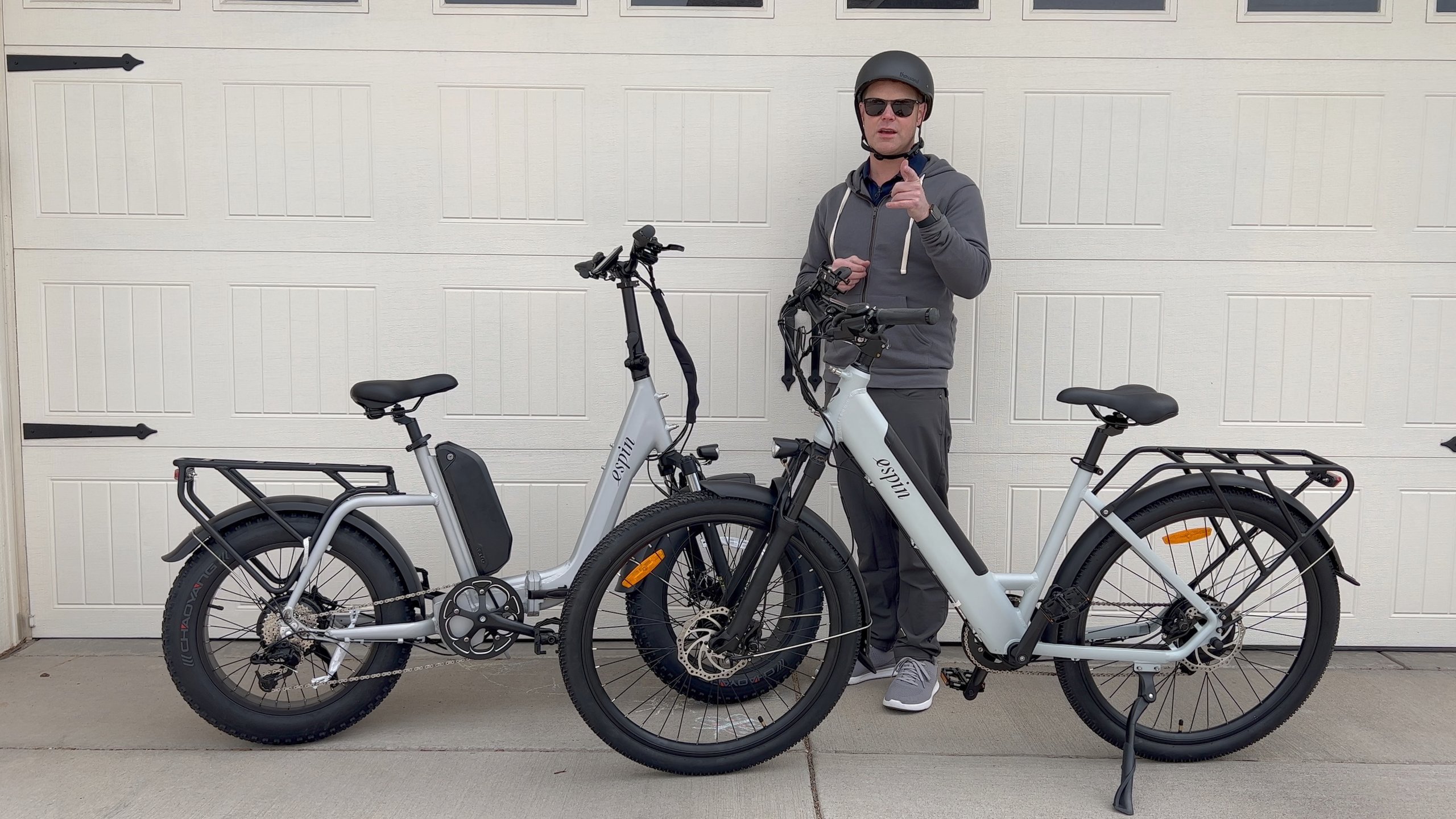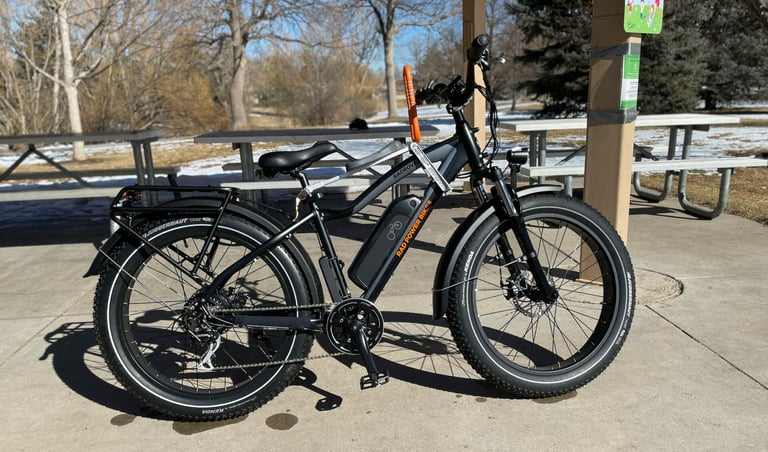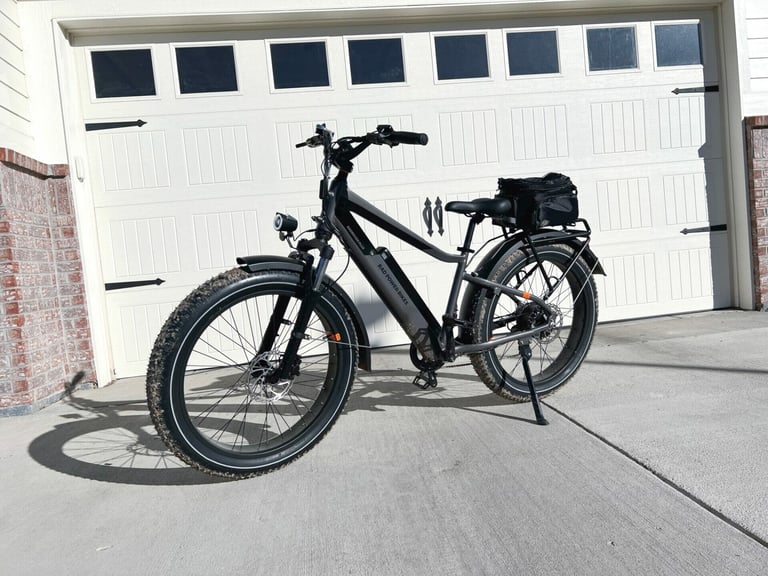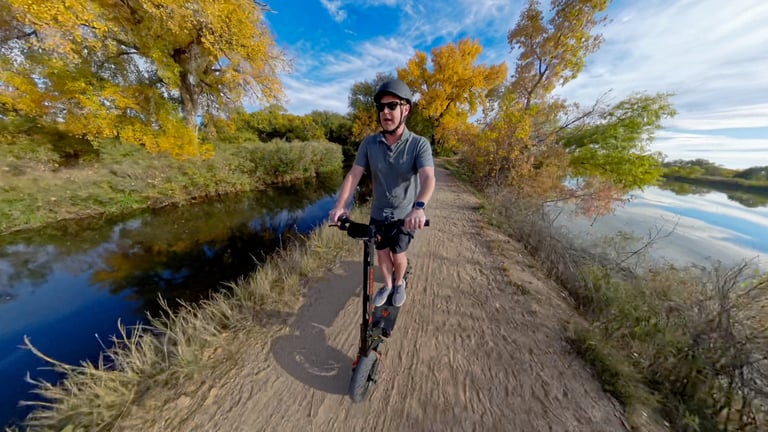- Peptides Explained: What Are Peptides and Why People Inject Them - August 10, 2025
- Rad Power Bikes Review: Are Rad Power Electric Bikes Any Good? - August 5, 2025
- RadRover 6 Plus Review: The Next Generation of the World’s Best-Selling Fat Tire eBike - August 5, 2025
Welcome to the ultimate eBike glossary—a one-stop guide to decoding the lingo of the electric bike world. Whether you’re a seasoned rider or just dipping your toes into the eBike waters, this A-Z glossary has you covered.
Ever wondered what the heck “torque sensor” means or why “regen braking” is a game-changer? We’ve got you. From battery basics to hub motors and everything in between, this glossary breaks down the jargon so you can ride smarter, shop better, and maybe even impress your friends with your newfound knowledge.
Ready to become an eBike expert? Let’s dive in!
Electric Bike Terms 1 – 7
- Ampere (Amp): The base unit of electrical current in the International System of Units (SI), equivalent to one coulomb per second. It measures the amount of electric charge passing a point in an electric circuit per unit time, essential for understanding the flow of electricity in e-bike systems.
- Amp-Hours (Ah): A measure of battery capacity, indicating how many hours a battery can put out one amp of current. This metric helps determine how long a battery can last before needing a recharge, directly impacting the range of an electric bike.
- Battery: A device consisting of one or more electrochemical cells that store and supply electrical energy to power the e-bike’s motor. Modern e-bike batteries are typically lithium-ion, known for their high energy density and long life cycles.
- Belt Drive: A drive system using a continuous loop of rubber or synthetic material instead of a traditional metal chain. Belt drives are quieter, require less maintenance, and are more durable, making them an attractive option for urban and commuter e-bikes.
- Bottom Bracket: The part of the bike frame where the crankset is mounted, housing the bearings that allow the crank arms to rotate smoothly. It plays a crucial role in the bike’s drivetrain efficiency and overall riding experience.
- Cadence: The rate at which a cyclist pedals, measured in revolutions per minute (RPM). Maintaining an optimal cadence can improve efficiency and reduce fatigue, especially important when using pedal-assist modes on an e-bike.
- Cargo Bike: A bike designed to carry heavy loads, often featuring an extended frame, reinforced structure, and additional carrying capacity. Cargo e-bikes are popular for transporting goods, children, and heavy items, offering an eco-friendly alternative to cars.
Looking for a great Cargo e-bike?
Check out these reviews:
Electric Bike Terms 8 – 17
- Class 1 E-Bike: An electric bike that provides pedal assist up to 20 mph without a throttle. These bikes require the rider to pedal to activate the motor, making them suitable for most bike paths and trails where motorized vehicles are restricted. Learn more about the differences here.
- Class 2 E-Bike: An electric bike that provides both pedal assist and throttle power up to 20 mph. The throttle allows the rider to engage the motor without pedaling, offering more flexibility and ease of use, especially in stop-and-go traffic.
- Class 3 E-Bike: An electric bike that provides pedal assist up to 28 mph, often referred to as a speed pedelec. These bikes are designed for faster commutes and longer distances, but may be subject to additional regulations and restrictions in some areas.
- Controller: The electronic device that manages the power flow from the battery to the motor, interpreting input from the rider and sensors to regulate speed and torque. It ensures smooth and efficient operation of the e-bike’s electrical system.
- Crankset: The component of a bike that includes the crank arms and chainrings, converting the rider’s pedaling motion into rotational force to drive the chain and propel the bike. In e-bikes, the crankset may also integrate with mid-drive motors for enhanced performance.
- Direct-Drive Motor: A type of electric motor that directly drives the wheel without internal gears, known for its simplicity and reliability. While heavier and less efficient at low speeds, direct-drive motors are quiet and provide regenerative braking capabilities.
- Display: The screen mounted on an e-bike’s handlebars that shows information such as speed, battery level, assist mode, and trip data. Displays can range from basic LED indicators to advanced LCD screens with multiple functions and connectivity options.
- Drive Modes: Different levels of pedal assistance provided by the e-bike, such as Eco, Standard, and Turbo. These modes allow riders to adjust the level of motor support based on terrain, battery life, and personal preference, optimizing performance and range.
- Dropout: The part of the bike frame where the wheel axles are attached, crucial for securing the wheels in place. Dropouts can be horizontal or vertical, influencing the ease of wheel removal and alignment, especially important for maintenance and repairs.
- E-Bike: A bicycle equipped with an electric motor to assist with propulsion, combining traditional cycling with powered support. E-bikes come in various styles, including commuter, mountain, and cargo bikes, catering to different riding needs and preferences.
Electric Motor Types
Brushed Motor: An older motor type using brushes and a commutator to direct current, known for simplicity and affordability. While they generate noise and require more maintenance due to brush wear, brushed motors remain a viable option for budget-friendly e-bikes.
Brushless DC Motor (BLDC): A more advanced and common motor type used in modern e-bikes, offering improved efficiency, durability, and quiet operation. Without brushes, these motors reduce maintenance needs and deliver a smoother, more responsive riding experience.
Geared Hub Motor: These motors contain internal gears to increase torque, making them an excellent choice for tackling hills and cargo loads. Geared hub motors offer a balance between weight, efficiency, and performance, enhancing maneuverability in varied terrains. They operate more quietly than direct-drive motors and offer improved handling.
Mid-Drive Motor: Positioned centrally on the bike, this motor uses the bike’s gears to provide power, offering balanced weight distribution and increased efficiency on hilly routes. Mid-drive motors excel in off-road conditions and inclines, providing better traction and stability.
Want to know more about Electric bikes?
Check out our ultimate guide to ebikes.
Electric Bike Terms 18 – 27
- Electronic Shifting: Gear shifting controlled electronically rather than mechanically, using motors and sensors to change gears with precision. Electronic shifting systems offer smoother, faster, and more reliable gear changes, enhancing the overall riding experience.
- Fork: The part of the bike frame that holds the front wheel, consisting of two blades connected to the head tube. Forks can be rigid or equipped with suspension to absorb shocks, improving comfort and control on various terrains.
- Geared Hub Motor: A hub motor with internal gears to increase torque and efficiency, providing better performance on hills and at low speeds. Geared hub motors are lighter and more compact than direct-drive motors, making them popular for many e-bike designs.
- Gear Ratio: The ratio of the number of teeth on the chainring to the number of teeth on the rear sprocket, determining the bike’s mechanical advantage. Different gear ratios affect acceleration, climbing ability, and top speed, crucial for optimizing performance.
- Handlebar: The part of the bike used for steering, typically made of aluminum or carbon fiber. Handlebars come in various shapes and sizes, influencing riding posture, comfort, and control, with options for flat, riser, and drop bars.
- Hub Motor: A motor located in the hub of either the front or rear wheel, directly driving the wheel’s rotation. Hub motors are popular for their simplicity and ease of installation, offering a clean and integrated look without affecting the bike’s drivetrain.
- Integrated Battery: A battery that is built into the frame of the e-bike, providing a sleek and streamlined appearance. Integrated batteries are often removable for convenient charging and replacement, enhancing the bike’s aesthetics and functionality.
- Kilowatt (kW): A unit of power equal to 1,000 watts, commonly used to measure the output of electric motors. Understanding kilowatt ratings helps compare the power and performance of different e-bike motors, influencing speed and climbing ability.
- Lithium-Ion Battery: A type of rechargeable battery commonly used in e-bikes for its high energy density, long life cycle, and lightweight properties. Lithium-ion batteries offer efficient energy storage and fast charging, making them ideal for modern electric bikes.
- Mid-Drive Motor: A motor located at the bike’s bottom bracket, providing power directly to the drivetrain. Mid-drive motors offer better weight distribution and efficiency, especially on hilly terrain, by leveraging the bike’s existing gears for optimal performance.
Charging Considerations and Tips
Charging an e-bike effectively involves understanding its voltage and ampere specifications to avoid overcharging. Using the manufacturer’s charger is recommended for safety and efficiency. Storing batteries at a partial charge when not in use prolongs their life.
Avoid exposing batteries to extreme temperatures, which can degrade capacity. Charging in a temperature-controlled environment and checking periodically for damage or inconsistencies can prevent issues and extend battery lifespan.
Battery Technologies
Lithium Polymer (Li-Po) Battery: Similar to lithium-ion but with a different electrolyte format, offering more flexibility in shape and configuration. Li-Po batteries weigh less and provide high discharge rates, making them popular in performance-oriented e-bikes, albeit usually at a higher cost.
Nickel-Metal Hydride (NiMH) Battery: Previously common before lithium technologies took over, NiMH batteries offer moderate energy density and are more environmentally friendly. However, their higher self-discharge rate and memory effect make them less desirable today.
Solid-State Battery: An emerging technology that promises higher energy density and safety by using solid electrolytes instead of liquid. While not yet widespread in e-bikes, solid-state batteries have the potential to revolutionize the market by offering faster recharge times and longer cycle life, making them an exciting development in electric mobility.
Looking for a great Mid-Drive Motor ebike?
Check out our QuietKat Review.
Electric Bike Terms 28 – 41
- Modes: Different levels of motor assistance available on an e-bike, such as Eco, Standard, and Turbo. These modes allow riders to customize their riding experience, balancing power output, battery life, and effort based on riding conditions and preferences.
- Newton Meter (Nm): A unit of torque, measuring the rotational force of the motor. Higher torque values indicate stronger acceleration and better climbing ability, essential for assessing an e-bike’s performance, especially on challenging terrains.
- PAS (Pedal Assist System): A system that provides motor assistance when the rider pedals, enhancing the cycling experience by reducing effort. PAS systems use sensors to detect pedaling cadence and force, adjusting motor output to match the rider’s input.
- Pedelec: A type of e-bike that requires pedaling to activate the motor, providing assistance based on the rider’s effort. Pedelecs are designed to enhance traditional cycling, offering a more natural riding experience while extending range and reducing fatigue.
- Power: The output of the motor, usually measured in watts, indicating the motor’s ability to perform work. Higher power ratings generally translate to faster speeds and better hill-climbing capabilities, important for evaluating an e-bike’s overall performance.
- Q-Factor: The distance between the pedals, measured parallel to the bottom bracket. A wider Q-factor can provide more stability and comfort, especially for riders with wider hips, while a narrower Q-factor may offer a more efficient pedaling motion.
- Range: The distance an e-bike can travel on a single battery charge, influenced by factors such as battery capacity, motor efficiency, terrain, and riding style. Understanding range is crucial for planning trips and ensuring the e-bike meets the rider’s needs.
- Regenerative Braking: A system that recovers energy during braking and stores it in the battery, extending the e-bike’s range. Regenerative braking is more common in direct-drive motors and helps improve overall energy efficiency and sustainability.
- S-Pedelec: A European term for a Class 3 e-bike, providing pedal assist up to 28 mph. S-pedelecs are designed for faster commuting and longer distances, often requiring additional safety features and compliance with specific regulations.
- Saddle: The seat of the bike, designed for comfort and support during riding. Saddles come in various shapes, sizes, and materials, with options for added padding, ergonomic designs, and suspension features to enhance the riding experience.
- Speed Sensor: A device that measures the speed of the bike, often used in conjunction with pedal assist systems to regulate motor output. Speed sensors help ensure smooth and consistent assistance, adapting to the rider’s pace and maintaining control.
- Throttle: A device that allows the rider to control the motor without pedaling, providing direct power on demand. Throttles can be twist-grip or thumb-operated, offering convenience and ease of use, especially in stop-and-go traffic or for quick acceleration.
- Torque: The rotational force produced by the motor, often measured in Newton meters (Nm). Higher torque values indicate stronger acceleration and better climbing ability, essential for assessing an e-bike’s performance, especially on challenging terrains.
- Torque Sensor: A sensor that measures the amount of force applied to the pedals, adjusting motor output to match the rider’s effort. Torque sensors provide a more responsive and natural riding experience, enhancing the integration of motor assistance with pedaling.
More great eBike Reviews
Electric Bike Terms 42 – 50
- Voltage (V): The electrical potential difference, measured in volts, indicating the energy per unit charge. Higher voltage systems can deliver more power and efficiency, influencing the performance and speed capabilities of an e-bike’s motor.
- Watt (W): A unit of power, measuring the rate of energy transfer, commonly used to describe the output of electric motors. Understanding watt ratings helps compare the power and performance of different e-bike motors, influencing speed and climbing ability.
- Watt-Hours (Wh): A measure of energy capacity, indicating how many watts a battery can supply for one hour. This metric helps determine the range of an e-bike, with higher watt-hour ratings generally translating to longer distances on a single charge.
- Wheelbase: The distance between the front and rear axles of the bike, affecting stability, handling, and comfort. A longer wheelbase provides more stability and a smoother ride, while a shorter wheelbase offers quicker handling and maneuverability.
- Chainring: The front gear(s) attached to the crankset, driving the chain and transferring power from the pedals to the rear wheel. Chainrings come in various sizes and configurations, influencing gear ratios and the bike’s overall performance.
- Derailleur: The mechanism that moves the chain between gears on the rear cassette or front chainrings, allowing the rider to change gears. Derailleurs are essential for optimizing pedaling efficiency and adapting to different terrains and riding conditions.
- Dropper Post: A seat post that can be adjusted up or down while riding, providing flexibility for different riding situations. Dropper posts are popular in mountain biking, allowing riders to lower the saddle for descents and raise it for climbs and flat terrain.
- Frame: The main structure of the bike, to which all other components are attached. Frames are typically made of materials such as aluminum, carbon fiber, or steel, each offering different characteristics in terms of weight, strength, and ride quality.
- Head Tube: The part of the frame that holds the front fork and handlebars, playing a crucial role in steering and overall bike geometry. The angle and length of the head tube influence handling, stability, and the rider’s position on the bike.
E-Bike Legal Regulations
E-bike classifications can vary by region, impacting where and how they can be used. Class 1 e-bikes, requiring pedaling without throttle, are often allowed on bike paths and sidewalks. Class 2 and 3 types, offering throttle and higher speeds, may be restricted from certain trails or need registration.
Understanding local laws ensures compliance and safety on the road, with some areas requiring helmets or lights for all types. Riders should also check for any updates in regulation, especially when traveling cross-country or internationally.
Want to learn more about eBikes? Check out our ultimate eBike Guide.
Environmental Impact of eBikes
eBikes significantly reduce greenhouse emissions compared to cars, with potential savings in fuel and emissions during short rides. By using renewable sources for charging, riders can further lower their ecological footprint.
Moreover, the manufacturing process of e-bikes tends to require less energy than car production. Commuting on an e-bike conserves resources, with more efficient energy use per mile and less pollution, contributing to cleaner urban environments.







